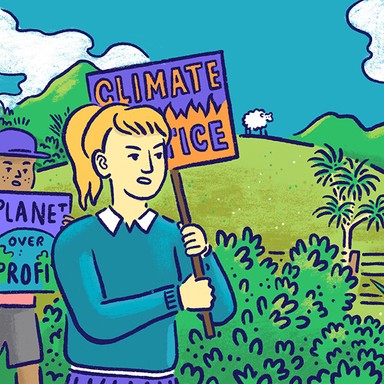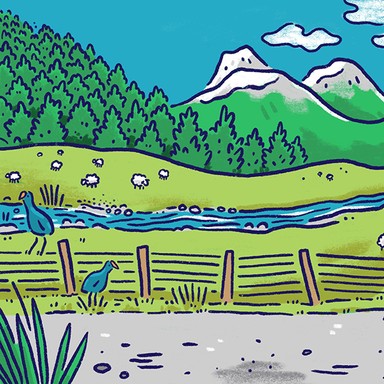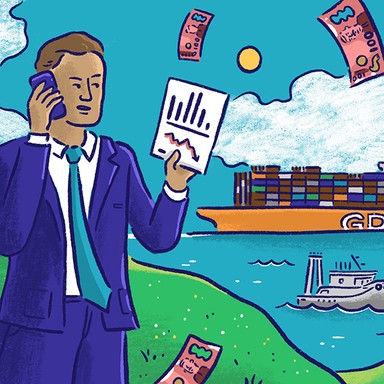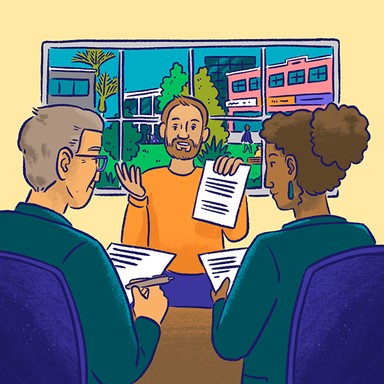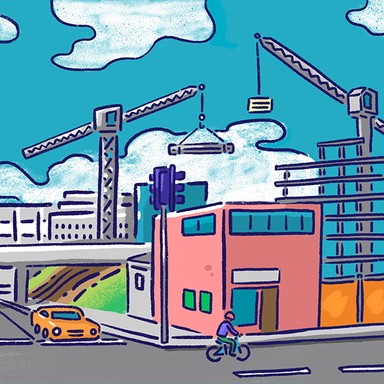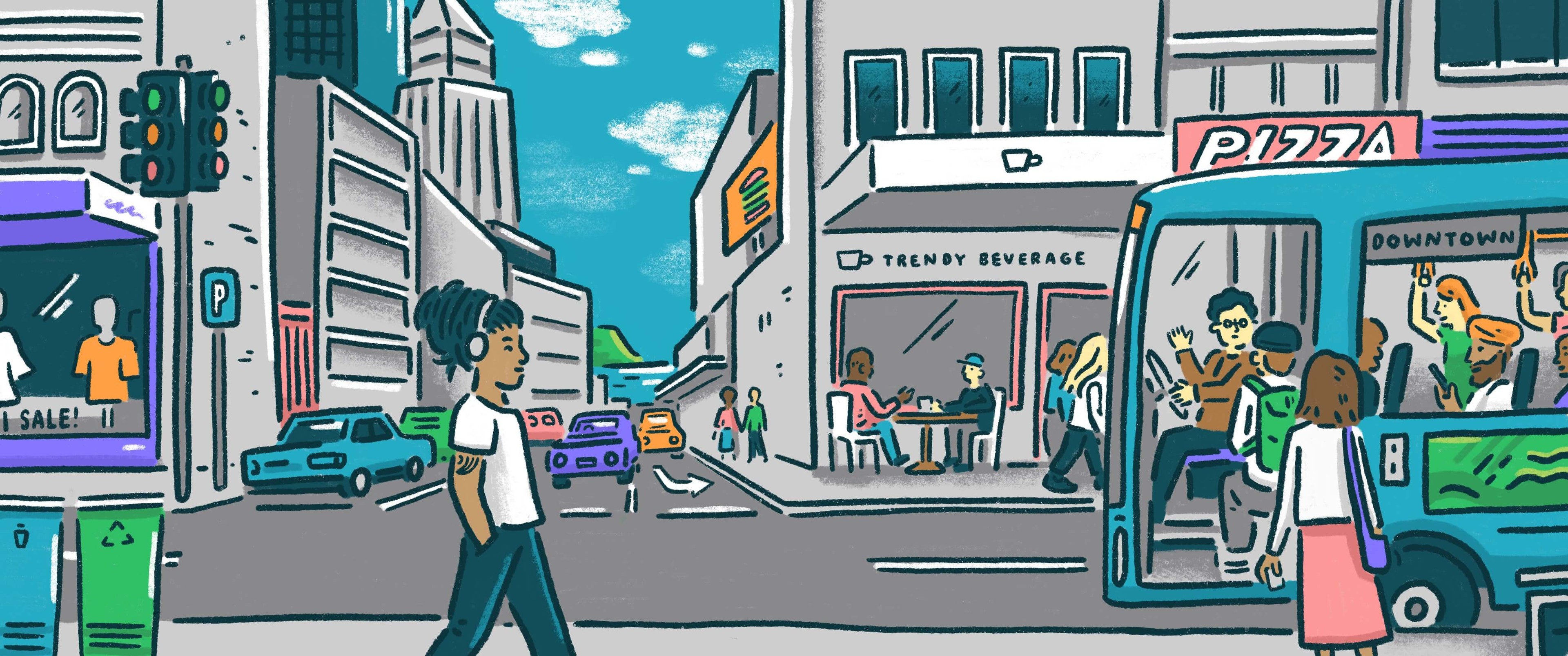
Hamilton City Council
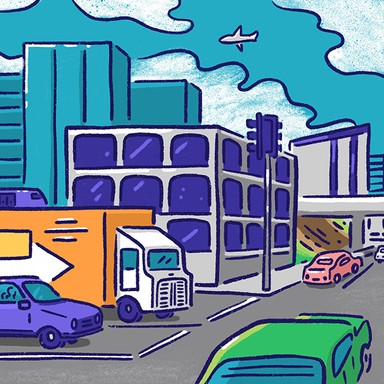
Transport
Helping communities get from A to B is a key responsibility of local government, from making sure the buses run on time to providing car parking and walking and cycling paths. Whether public transport is the responsibility of the regional or local council depends on where you are in the country. Local councils also own 87% of New Zealand’s roads.

Transport
Helping communities get from A to B is a key responsibility of local government, from making sure the buses run on time to providing car parking and walking and cycling paths. Whether public transport is the responsibility of the regional or local council depends on where you are in the country. Local councils also own 87% of New Zealand’s roads.
Create safer opportunities for those who want to walk, cycle, catch a bus, use shared car fleets or charge an electric vehicle.
Work with central government to invests in our city's infrastructure.
Enable safer public transport choices for our residents.
Ensure community engagement to enable feedback that also represents marginalised or under-represented communities.
Ensure that our city's different modes of transport are easy and safe to use by identifying gaps in service (maps, parking etc).
Partner with local organisations and communities to identify multi-modal transport options for their local communities.
Expand alternative transport options to reduce traffic congestion.
Encourage 'walking school bus' programmes, especially in the high-use Peachgrove Road corridor.
Work with regional council to keep bus transport affordable and plan for shifting the fleet to electric buses.
Build more and better cycleways that accommodate all shapes and sizes of bikes.
Make sure roads and footpaths are repaired in a more timely manner.
Build wider footpaths so that mobility scooters, walkers and children can all safely use them.
Work closely with central government to deliver quality transport infrastructure like roads, bridges, car parks and footpaths.
Make walking and cycling safe through off-road access options.
There need to be more cycle paths in Hamilton.
Road safety – there are a lot of pot holes on our roads that need fixing and repairing so it doesn't get worse.
Needs to be a better transport system.
Work with Waikato Regional Council to increase number and frequency of buses especially on main school routes at start/finish times. Expansion of FlexiRide.
Review the $1 billion budget for cycling and identify need vs wants. Safe cycling is important but only 1% of trips are currently by bike.
Ensure all modes of transport are considered and provided for in new green fields developments.
Micro transportation, cycling and walking, offering alternative ways to get around the city. New cycleways are being planned around the world.
Road safety is very important as cars, bikes and scooters need to travel carefully, watching out for one another. We need a safety campaign.
Stopping traffic congestion is a top priority, this can be achieved by redirecting traffic to other roads helping cars keep the flow moving.
Work with central government to ensure the School Links Cycleway is built now and the vision of Hamilton Biking Plan is realised.
Work with Regional Council to ensure the operation of the ambitious Regional Public Transport Plan.
Ensure that all transport plans and developments prioritise the needs of children, the elderly and people with disabilities.
Grow our network of separated cycle lanes and invest in maintaining smooth footpaths for pedestrians.
Public transport that is fast and frequent (well-priced too!) that is moving towards low carbon alternatives.
Build a pedestrian and cycle bridge over the river from the city jetty to Memorial Park.
Develop a multi-modal plan with an emphasis on public transport, including park and ride and school-driven transport needs.
Design a high volume transport network with low volume links to suburbs. The initial emphasis is the school service, followed by the worker.
Upgrade the airport runway to allow larger aircraft, creating jobs for the region.
Establish speed bumps around all school areas to make them safer and secure for children.
Build more walkways and cycle lanes around recreational parks.
Partner to fund the subsidy for public transport for seniors and students.
Recognise that walking is the most popular recreational activity in New Zealand and provide more safe interesting walkways.
Reduce congestion. While recognising less cars are desirable, council must seek cheap effective and safe ways to improve traffic flow.
Introduce a school bus system similar to the American Yellow School buses. Morning and 3.00pm congestion would be reduced immediately.
Work with local trucking companies to develop an education program around cycling safety.
Commit to a car free city centre by 2050.
Work our arts community to develop ideas around incentivising people to utilise our current public transport more.
Create safer opportunities for those who want to walk, cycle, catch a bus, use shared car fleets or charge an electric vehicle.
Work with central government to invests in our city's infrastructure.
Enable safer public transport choices for our residents.
Ensure community engagement to enable feedback that also represents marginalised or under-represented communities.
Ensure that our city's different modes of transport are easy and safe to use by identifying gaps in service (maps, parking etc).
Partner with local organisations and communities to identify multi-modal transport options for their local communities.
Expand alternative transport options to reduce traffic congestion.
Encourage 'walking school bus' programmes, especially in the high-use Peachgrove Road corridor.
Work with regional council to keep bus transport affordable and plan for shifting the fleet to electric buses.
Build more and better cycleways that accommodate all shapes and sizes of bikes.
Make sure roads and footpaths are repaired in a more timely manner.
Build wider footpaths so that mobility scooters, walkers and children can all safely use them.
Work closely with central government to deliver quality transport infrastructure like roads, bridges, car parks and footpaths.
Make walking and cycling safe through off-road access options.
There need to be more cycle paths in Hamilton.
Road safety – there are a lot of pot holes on our roads that need fixing and repairing so it doesn't get worse.
Needs to be a better transport system.
Work with Waikato Regional Council to increase number and frequency of buses especially on main school routes at start/finish times. Expansion of FlexiRide.
Review the $1 billion budget for cycling and identify need vs wants. Safe cycling is important but only 1% of trips are currently by bike.
Ensure all modes of transport are considered and provided for in new green fields developments.
Micro transportation, cycling and walking, offering alternative ways to get around the city. New cycleways are being planned around the world.
Road safety is very important as cars, bikes and scooters need to travel carefully, watching out for one another. We need a safety campaign.
Stopping traffic congestion is a top priority, this can be achieved by redirecting traffic to other roads helping cars keep the flow moving.
Work with central government to ensure the School Links Cycleway is built now and the vision of Hamilton Biking Plan is realised.
Work with Regional Council to ensure the operation of the ambitious Regional Public Transport Plan.
Ensure that all transport plans and developments prioritise the needs of children, the elderly and people with disabilities.
Grow our network of separated cycle lanes and invest in maintaining smooth footpaths for pedestrians.
Public transport that is fast and frequent (well-priced too!) that is moving towards low carbon alternatives.
Build a pedestrian and cycle bridge over the river from the city jetty to Memorial Park.
Develop a multi-modal plan with an emphasis on public transport, including park and ride and school-driven transport needs.
Design a high volume transport network with low volume links to suburbs. The initial emphasis is the school service, followed by the worker.
Upgrade the airport runway to allow larger aircraft, creating jobs for the region.
Establish speed bumps around all school areas to make them safer and secure for children.
Build more walkways and cycle lanes around recreational parks.
Partner to fund the subsidy for public transport for seniors and students.
Recognise that walking is the most popular recreational activity in New Zealand and provide more safe interesting walkways.
Reduce congestion. While recognising less cars are desirable, council must seek cheap effective and safe ways to improve traffic flow.
Introduce a school bus system similar to the American Yellow School buses. Morning and 3.00pm congestion would be reduced immediately.
Work with local trucking companies to develop an education program around cycling safety.
Commit to a car free city centre by 2050.
Work our arts community to develop ideas around incentivising people to utilise our current public transport more.
Mayor
Compare the mayoral candidates in your area
Local council
Compare the candidates for your city or district council
Regional council
Compare the candidates for your regional council
Local board
Compare the candidates for your local or community board
